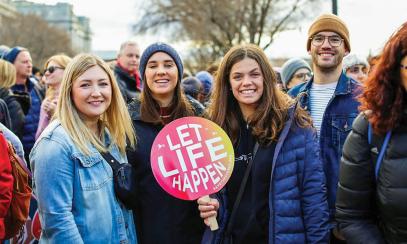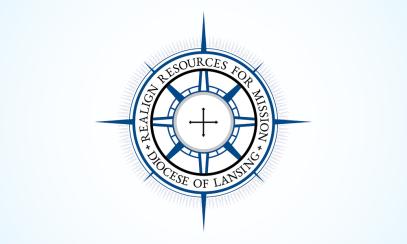
50th Anniversary of Vatican II
The first major document of Vatican II: Sacrosanctum Concilium
On Dec. 4, 1963, Pope Paul VI promulgated The Constitution on the Sacred Liturgy (Sacrosanctum Concilium). Liturgy had been the first topic debated and Sacrosanctum Concilium became the first document ratified by the Second Vatican Council.
The choice made sense for many reasons, not least of all because the preparation draft on the liturgy was in fairly decent shape at the start of the Council. However, more importantly, the goals of the Second Vatican Council dictated that special attention be paid to the liturgy. These four goals were outlined in the introduction of the document:
- To impart an ever-increasing vigor to the Christian life of the faithful;
- To adapt more closely to the needs of our age those institutions which are subject to change;
- To foster whatever can promote union among all who believe in Christ; and
- To strengthen whatever can help all mankind into the Church’s fold.
The Council fathers understood that it was through the liturgy that the four goals of the Second Vatican Council might most readily be achieved. Through the liturgy, especially in the divine sacrifice of the Eucharist, the work of redemption is accomplished and the faithful “are enabled to express in their lives and manifest to others the mystery of Christ and the real nature of the true Church.” The liturgy builds up those in the Church and increases their power to preach Christ and show forth the Church to those outside until there is “one fold and one shepherd.” In short, the liturgy is “the summit toward which the activity of the Church is directed; it is also the fount from which all her power flows.”
The central aim
The reforms promoted by Sacrosanctum Concilium must be understood in light of a central truth: The liturgy can only produce its full effects when the faithful participate fully, consciously and actively. In fact, the constitution stated that “the full and active participation by all the people is the aim to be considered before all else, for it is the primary and indispensable source from which the faithful are to derive the true Christian spirit.” Given this reality, it comes as no surprise that the majority of the decrees issued in the document were concerned with how best to achieve this goal.
Fostering participation through formation/training
Sacrosanctum Concilium repeatedly called for the formation and training of not only pastors and clergy in general, but of other liturgical leaders and the whole of the faithful. Consequently, seminaries and other institutes were to appoint professors of liturgy and the study of liturgy in seminaries was to receive more emphasis by becoming compulsory. The constitution also restored the catechumenate for adults in order to provide time for the suitable instruction and to provide opportunities for sanctification through the sacred rites “to be celebrated at successive intervals of time.”
The same attention was given to the importance of sacred music, sacred art and sacred furnishings. The teaching and practice of music in seminaries and other Catholic institutions and schools was to receive more importance with the accompanying need for carefully trained teachers and the establishment of higher institutes of sacred music.
In the same spirit, composers and artists were encouraged to “serve God’s glory in holy Church” through their talents in order to edify the faithful and foster their piety and formation. This encouragement was manifested in the fact that the Council placed no stylistic limits on artists, stating the Church “has not adopted any particular style of art as her own.” At the same time, the requirement that art and furnishings bring reverence and honor to the sacred buildings and rites remained in force. The Council also supported the practice of placing sacred images in churches for veneration by the faithful. It did, however, counsel that the number be moderate.
Fostering participation in the liturgy
Sacrosanctum Concilium promoted full, conscious and active participation in the liturgy in many ways. For example, it encouraged the people to take part in acclamations, responses, psalms, antiphons, hymns and gestures. It likewise established general norms to simplify the rites, to normalize the sermon, to encourage Bible services and to allow limited use of the vernacular (this norm was applied to the sacraments and sacramentals). It recommended that the faithful receive Communion (the more perfect form of participation in the Mass) and under both forms. It continued the restoration of the divine office by reinstating the traditional sequence of the hours and by supporting the already begun revision of the psalter with additional direction.
Regulation of the sacred liturgy
It is true that Sacrosanctum Concilium called for reform, restoration and promotion of the liturgy in its many facets. At the same time, it is important to note that it also clearly stated that the regulation of the sacred liturgy “depends solely on the authority of the Church, that is, on the Apostolic See, and, as laws may determine, on the bishop.” Consequently, “no other person, not even a priest, may add, remove, or change anything in the liturgy on his own authority.”
Blessed Pope John Paul II on the 40th Anniversary of Sacrosanctum Concilium
“Forty years later, it is appropriate to review the ground covered. I have already suggested on former occasions a sort of examination of conscience concerning the reception given to the Second Vatican Council. Such an examination must also concern the liturgical and sacramental life. ‘Is the Liturgy lived as the “origin and summit” of ecclesial life, in accordance with the teaching of Sacrosanctum Concilium?’ Has the rediscovery of the value of the Word of God brought about by liturgical reform met with a positive confirmation in our celebrations? To what extent does the Liturgy affect the practice of the faithful and does it mark the rhythm of the individual communities? Is it seen as a path of holiness, an inner force of apostolic dynamism and of the Church’s missionary outreach?”
– Apostolic Letter, Spiritus et Sponsa, Blessed Pope John Paul II (12/4/2003)
Fun facts
- The debate on the liturgy lasted for 15 days.
- The Constitution on the Sacred Liturgy was promulgated by a majority of 2,147-4.
- Cardinal Alfredo Ottaviani, who was speaking for those opposed to changes in the liturgy, had his microphone turned off to resounding applause when his speech ran over the allotted time.
- The 16 documents of Vatican II are divided into four constitutions, nine decrees and three declarations.
- The first meeting of the Second Vatican Council was adjourned after only 15 minutes.



